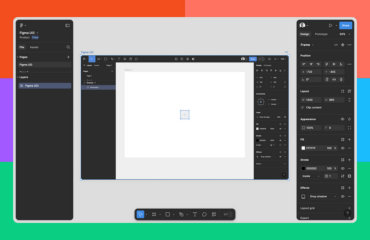How sociology could broaden the perspective on digital design that today's psychology centric approach doesn’t fully cover.

In the fast-paced world of digital design, UX, and service design, psychology often takes center stage. The discipline’s focus on understanding the individual — how people think, feel, and behave — makes it an obvious choice for those looking to create user-centric experiences. However, while psychology offers valuable insights, it tends to be overly focused on the individual. Even in social psychology, the lens remains largely fixed on how individuals within a group behave rather than on the broader societal forces at play. But what if we could widen that lens? What if we began to consider not just the user, but the society the user inhabits?
Enter sociology.
Traditionally, the field of sociology has been seen as the study of society, social institutions, and social relationships. It’s a discipline that asks different questions than psychology — questions that are perhaps equally, if not more, relevant to the work we do as designers. Yet, despite the clear value that sociology can bring to the table, it remains underutilized in our field.
So, why aren’t there more UX sociologists out there?
The limitations of a psychological approach
Psychology’s dominance in UX and service design is understandable. After all, if you’re designing a product or service, understanding how the end user thinks and behaves is crucial. Cognitive psychology, behavioral psychology, and even neuroscience provide frameworks and tools that help us predict how users will interact with a design, enabling us to create experiences that are intuitive, engaging, and satisfying.
But here’s the rub: psychology’s focus on the individual often means that the larger social context is ignored or oversimplified. When we design solely from a psychological perspective, we risk creating products that are hyper-individualized, perhaps even detached from the social realities in which they will be used.
Consider the rise of social media platforms. These products were designed with a deep understanding of individual psychology — dopamine loops, the need for social validation, the power of habit formation. Yet, the societal implications of these designs, such as their role in spreading misinformation or contributing to social polarization, were largely unforeseen. This isn’t just a failure of imagination; it’s a failure to consider the broader social forces at play.
Sociology: A wider lens for digital design
Sociology, on the other hand, takes a step back to examine how individuals fit into larger social structures. It asks how cultural norms, social inequalities, and institutional power dynamics shape behavior and influence how people interact with products and services.
One of sociology’s strengths lies in its dual focus: both macro and micro perspectives. On the macro level, sociology looks at large-scale social phenomena, such as societal norms, institutional power, and systemic inequalities. These factors can significantly shape how different user groups interact with a digital product or service. For example, how does a platform designed for financial services perform in regions with significant income inequality? How do social hierarchies influence who has access to and benefits from new technology?
On the micro level, sociology explores more immediate social interactions and how individuals navigate their roles within society. This micro perspective is equally valuable in UX and service design, as it delves into the nuanced social contexts that influence user behavior. It can help us understand how group dynamics, peer influence, or even familial roles impact how a product is used.
Together, these macro and micro perspectives provide a broader understanding of the complex context that always surrounds the interaction between a digital service or product and its users, whether we are considering a single user or multiple users within a network. By incorporating sociological insights, designers can move beyond merely optimizing for usability or engagement and start designing for the intricate, multi-layered realities of human social life.
Balancing the disciplines: a holistic approach
So how can we integrate sociology into our work without losing the valuable insights psychology provides? The key is balance. We need to start by acknowledging that every design decision has both individual and social implications. From there, we can draw on the strengths of both disciplines to inform our work.
For instance, when conducting user research, why not include questions that explore not just individual preferences, but also social influences? When developing personas, consider not only the user’s goals and pain points but also the social contexts they navigate daily. When evaluating a design’s success, measure not just engagement metrics but also social impact.
This balanced approach allows us to design products and services that are not only effective on an individual level but also meaningful within a broader societal context. It pushes us to think beyond the immediate user experience and consider the long-term social consequences of our designs.
The case for UX sociologists
In a world where digital products increasingly shape social behavior, the need for a sociological perspective in design has never been greater. While psychology will always be a cornerstone of UX and service design, it’s time to make room for sociology as well. By doing so, we can create designs that not only meet individual needs but also contribute to a healthier, more equitable society.
So, why aren’t there more UX sociologists out there? Perhaps because we’ve been too focused on the individual to see the larger picture. But as the impact of digital design on society becomes ever more apparent, it’s clear that we need both perspectives. After all, we’re not just designing for users; we’re designing for the world they live in.
Some have already pointed the value of that particular sociological lense when shaping digital products and services, but are there really any ux sociologists out there?
Related articles for further reading:
- Putting Users in Context: How Sociology Enhances our UX Practice
- Maximizing User Experience through Multidisciplinary Research: The benefits of incorporating…
- Why we need design sociology
I am one of three company mothers of One Day Interact. As a digital design agency, we seek to contribute to a positive development in a larger sense — for the individual, for humanity, the environment and the planet.
Why aren’t there more UX sociologists out there? was originally published in UX Collective on Medium, where people are continuing the conversation by highlighting and responding to this story.
Related Posts

As SNAP Delays Continue, 10 Ways to Face Food Prices – Civil Eats









